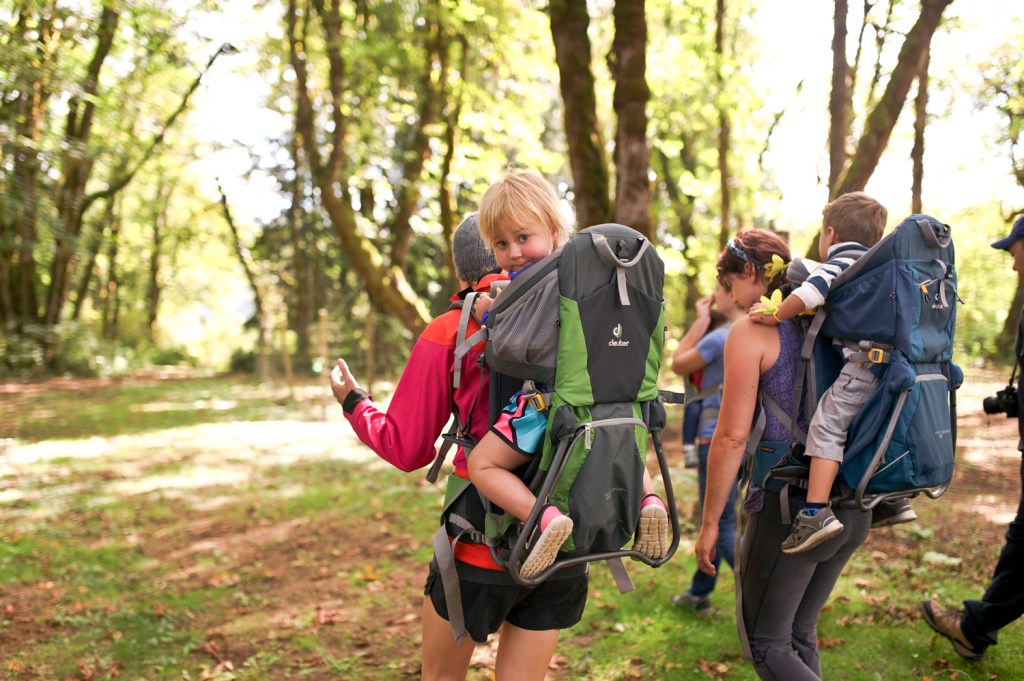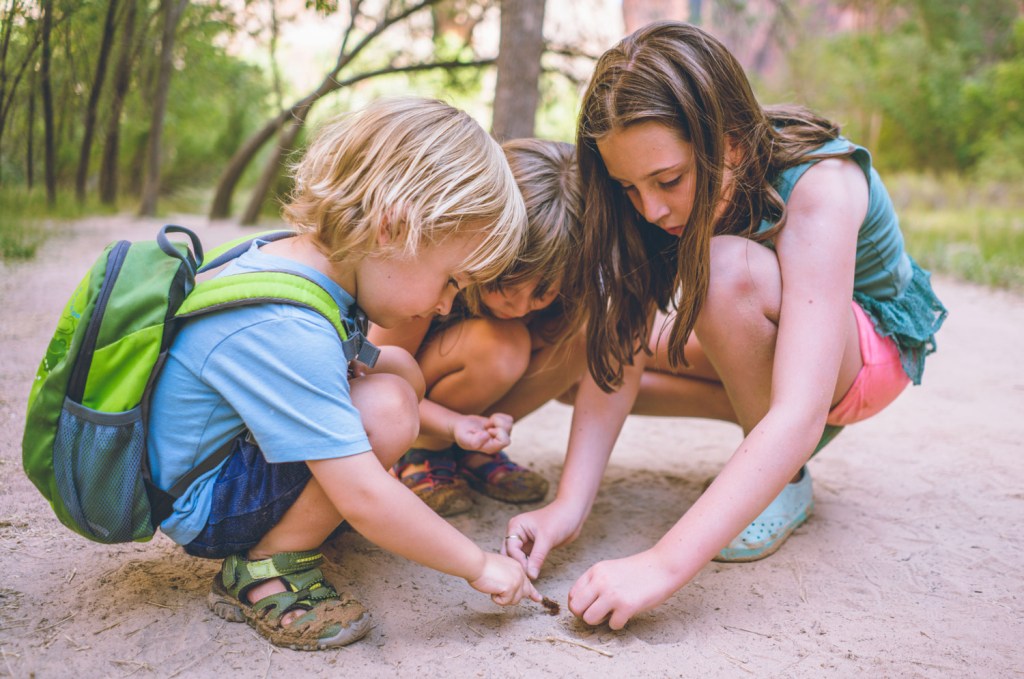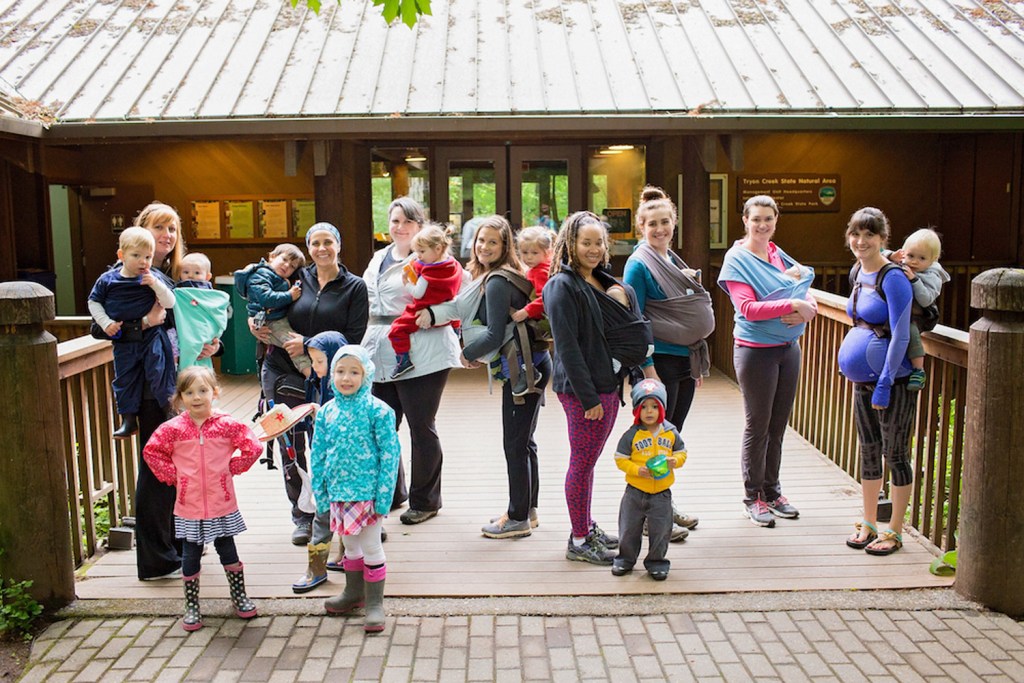A couple of years ago my 3-year-old son and I had one of those especially difficult days getting on trail. We were visiting Arches National Park and the challenge started in the parking lot of Delicate Arch. I wanted to carry Mason in a soft-structured carrier, but he just wasn’t having it. He insisted on the frame carrier and wouldn’t budge until I pulled my Deuter Kid Comfort 3 out of the back of our truck. Of course, once I got the frame carrier out, he wanted nothing to do with it. Thirty minutes later he was in, after much coaxing, bribing and practically forcing him into the carrier. That’s when I realized I hadn’t taken the time to adjust the size. If only I had started earlier in the day or had a distraction like a toy or a friend hiking with us to help alleviate the situation, setting off on our hike might have been smoother. Such is life as a parent, grandparent or caregiver of a young one attempting to get out there on trail.

Assess your situation ahead of time to make hiking fun for the whole family. (Photo Credit: Deanna Curry)
If you have kids or care for young kids on a regular basis, you’re probably nodding your head in solidarity and saying “been there.” If you are new to hiking with your baby or toddler, just wait. It’s coming. Soon you too will know the feeling of relief as you start down the trail after taking 30 minutes to just get out of the car and reach the trailhead. If I’ve learned anything over the last five years with Mason, one of the things I know all too well is that it’s important to really assess your situation—from where you are headed to the gear you are bringing—before you get to the trail. It would be nice if hiking with kids were as simple as picking a trail and going for it. It can be at times, but if you really want to have happy hikers who will keep enjoying family adventures well into their teen years and you want to accommodate the whole family—infant to grandparent—you want to carefully look at a combination of things.
Plan with the whole family in mind

Consider your family members and their unique needs to select a trail that feels just right. (Photo Credit: Ashley Scheider)
Once, you might have had a quiet little baby who was happy to gaze up at the sunlight streaming through the leaves in the trees, but now he’s 3. This means he’s in the “it’s all about me and my way” phase. Expect some serious patience and negotiating at times. For this, I suggest bribes and toys. Keep them handy for distractions and to get you moving. Do you have more than one kid? Sometimes, that can be a good thing, as multiple kids will keep each other going on trail. But it can also mean you’ll want to be more aware of the trails you are picking so you don’t have a mini heart attack when your 4-year-old decides to take off while you are changing a super poopy diaper. To keep pre-kindergarten-age kids in check while you’re on the ground wrestling with wet nappies, bring a toy like a magnifying glass and have your 4-year-old tell you all they can see on the ground. No toys? Ask them to find five shades of green for you in the surroundings. Bringing grandparents along? Consider the terrain and if there are roots or rocks they might have to step over. While a grandparent might do great on sidewalks, uneven terrain requires more muscle. There are many trails that can accommodate canes or walkers. The same thing goes for little ones who are new to walking. Smoother trails with bark or firm dirt are easier to negotiate than loose gravel. Also, look for trails with benches or good stumps for resting. This can be a boon for nursing parents.
Set hiking expectations appropriately

Seek out trails that are interesting early on in the hike. Bonus points for multiple “interesting for kids” stops along the way. (Photo Credit: Arika Bauer)
Hikes you used to do pre-baby might not be what you remembered. Once, you might have blasted through long, boring stretches to get to the gold nugget of the hike where the waterfall was flowing or the view was epic, but now you might literally be crawling or going around in circles on the trail. Seek out trails that are interesting early on in the hike. Bonus points for multiple “interesting for kids” stops along the way. Abandoned, crumbling structures (as long as they are not hazardous), a rope swing, flower fields, natural rock piles and huge muddy puddles are all great toddler and kid motivators. If you have older family members along, keep everyone positive and excited about the adventure by choosing smooth trails that require minimal hiking to reach the view, waterfall or point of interest. “When choosing a hike for my little one, I look for trails with variety and something fun at the end, such as waterfalls, lakes, a restored cabin. I don’t shy away from elevation, but make sure the trail is no longer than five miles. I’ve found that kids are stronger than we give them credit for, and with a little positive reinforcement and lots of snacks, they can climb most anything,” says Ryann Peverly, an ambassador for Adventure Mamas from Puyallup, Washington.
Find trails near you

Finding community will help get you to the best trails nearby. (Photo Credit: Ashley Scheider)
You might be surprised to find that you don’t need to travel far from home to find a trail that will keep kids entertained. In fact, for many, a shorter drive to a hike might mean a less cranky kid on trail. Not all kids travel well, so work up to hikes that are farther away as your child ages and you adventure more. “When I was new to exploring with my kids, I stayed close to home because there was a part of me that was afraid I’d get lost, especially if there was no cell service,” says Alex Wong, Hike It Baby Ambassador, of Salt Lake City, Utah. “Now I have no problem driving an hour for a great hike. Still, there are times I can’t do a hike that takes up the whole day, so on those days I go back to those hikes I learned early on that are close to home and I still get the enjoyment of being on trail.” Finding community will help get you to the best trails nearby. Are you a solo parent (single or often on your own) and wrangling a few kids at once? Keep it close to home for your own comfort level. Check out the Hike it Baby Solo Parenting Facebook group for resource suggestions from the community.
Pick the right hiking gear

Choose carriers wisely, as you’ll spend lots of time with this pack on your back! (Photo Credit: Jessica Human)
You don’t need fancy clothes or gear, but expect everything to get incredibly dirty. I always bring a change of clothes and a towel in the car because it’s not uncommon for Mason to lie down in a mud puddle just because it’s there. Simple rubber boots are a must if you live anywhere that gets even the slightest rain. Gloves and hats can be challenging to keep on. Be creative, and if your kid wants to rock a teapot cozy on their head that is shaped like a chicken (true story here), let them if it will keep them warm. Take the time to research your gear and don’t just buy it because it’s on sale or the first thing you see. This is especially true with carriers because you will be doing a lot of carrying when kids are young. As Melissa Freeman, Hike It Baby Ambassador from Hampton Roads, Virginia, says: “The carrier is key. Even if it’s a short distance or your kids are used to hiking, sometimes a skinned knee or a grumpy toddler suddenly necessitates being carried, and it’s way easier to throw them on your back than carry them in your arms.”
Remember, getting out there with family members will have ups and downs, bumps and bruises and plenty of nerve-racking moments. But the key is anticipating as much as you can prior to the hike, so you can deal with whatever is thrown at you on the day of your adventure.
Related articles:
